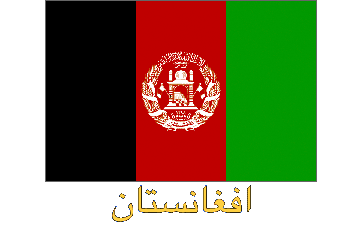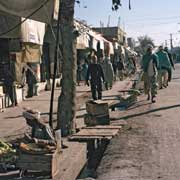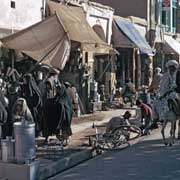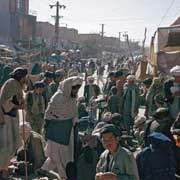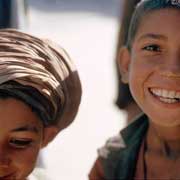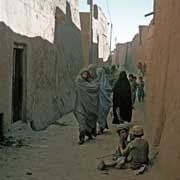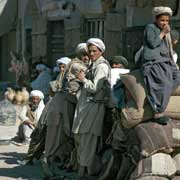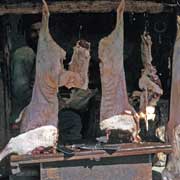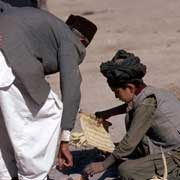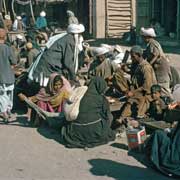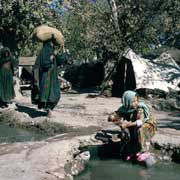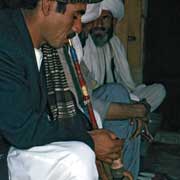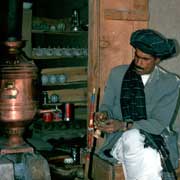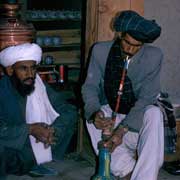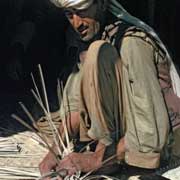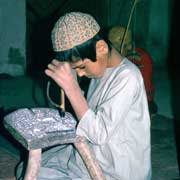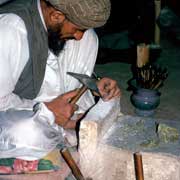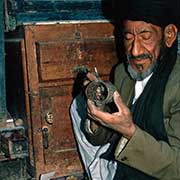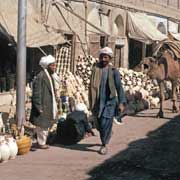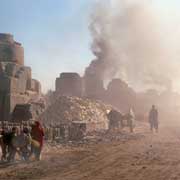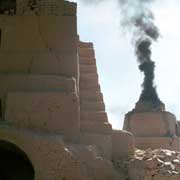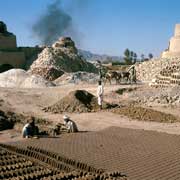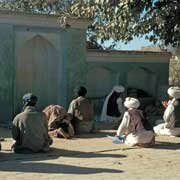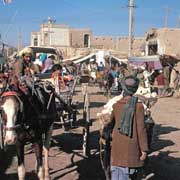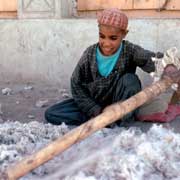Photos from Afghanistan
Kandahar, the main Pashtun city
Kandahar, the capital of the province with the same name, is Afghanistan’s second-largest city with a population of almost 470,000. It is in the south of the country, about halfway between Herat and Kabul; a road leads south to Quetta in Pakistan. It is an important trade centre for sheep, wool, cotton, food grains, fresh and dried fruit, and tobacco. The region around Kandahar produces excellent fruits, especially grapes, in areas where irrigation is possible.
you may then send it as a postcard if you wish.
Kandahar was founded by Alexander the Great in the fourth century BCE (its name may be derived from “Alexandria”), fought over by India and Persia, conquered by Arabs in the seventh century and by the Turkic Ghaznavids three centuries later. In the twelfth century, it was sacked by the Mongols under Genghis Khan. Then it became part of the Timurid empire and was conquered by Babur, founder of the Mogul empire of India in the sixteenth century. In 1748 it became the first capital of the emerging independent kingdom of Afghanistan. The city was laid out by Ahmad Shah, the father of modern Afghanistan and is dominated by his octangular, domed mausoleum.
British and Indian forces from British India occupied the city in 1839, during the first Anglo-Afghan war. They were forced to withdraw three years later. The British and Indian forces returned in 1878 during the second Anglo-Afghan war. In July 1880 they were heavily defeated at the Battle of Maiwand and again forced to withdraw a few years later, despite winning a battle near the city. Kandahar remained peaceful for the next 100 years. During the Soviet military occupation of 1979 to 1989, Kandahar was the site of a Soviet command. In August 1994 the Taliban captured Kandahar and soon after they made the city their capital: from 1996 to 2001, Kandahar served as the capital of the Islamic Emirate of Afghanistan.
Kandahar is the principal city of the Pashtun people, together with Peshawar, in Pakistan. There are many mosques; the most important is undoubtedly the Mosque of the Sacred Cloak, said to contain the cloak of the Prophet Muhammad, brought by Ahmed Shah in the eighteenth century. This greatest treasure is safely locked away in the mosque but may be brought out to be shown to the public on special occasions.


